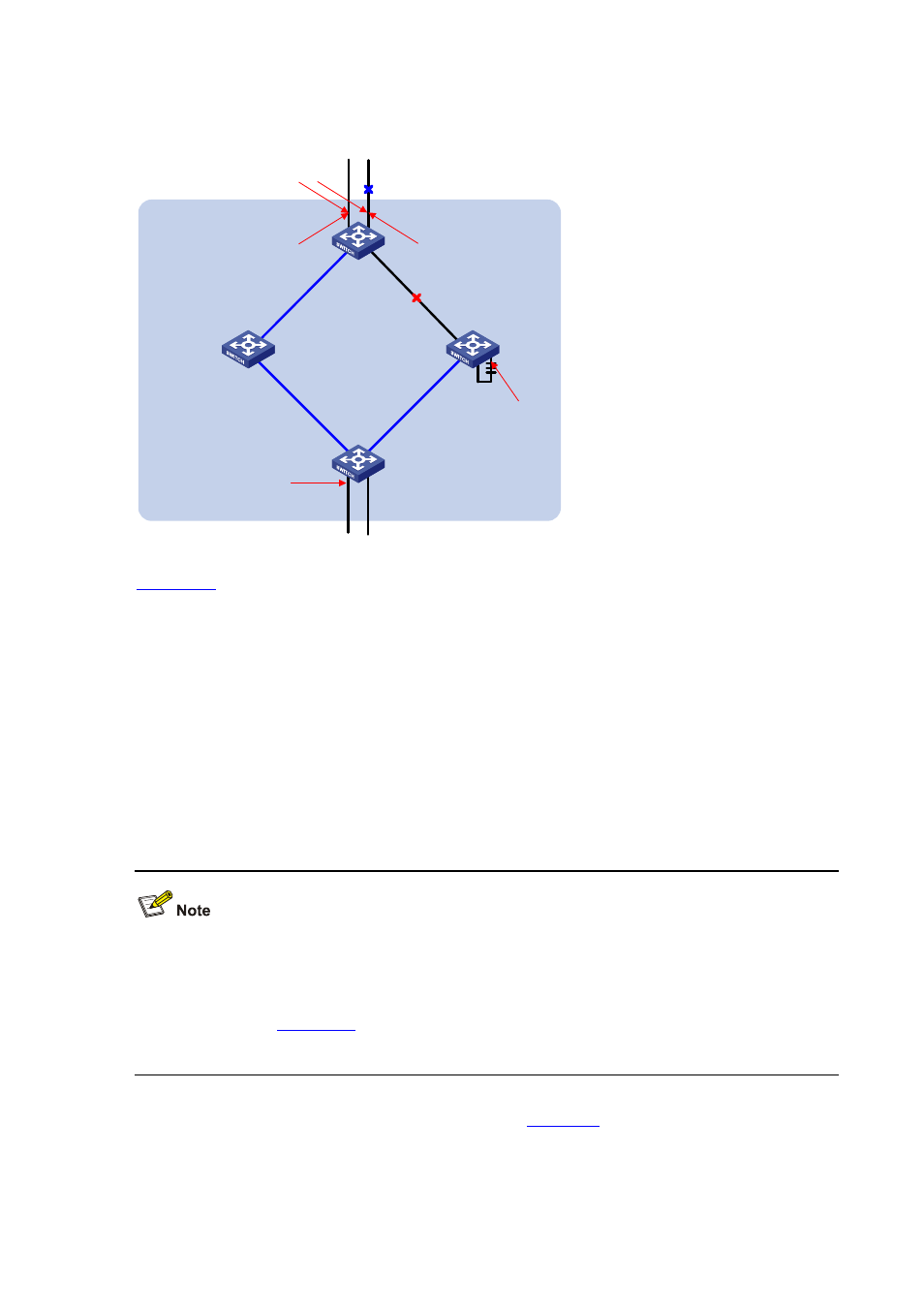H3C Technologies H3C WX6000 Series Access Controllers User Manual
Page 171

20-13
Figure 20-5
Port roles
Connecting to the
common root bridge
Edge ports
Port 1
Port 2
Master port
Alternate port
Designated port
Port 3
Port 4
Port 5
A
B
C
D
Port 6
Backup port
MST region
helps understand these concepts. Where,
z
Devices A, B, C, and D constitute an MST region.
z
Port 1 and port 2 of device A connect to the common root bridge.
z
Port 5 and port 6 of device C form a loop.
z
Port 3 and port 4 of device D connect downstream to other MST regions.
11) Port states
In MSTP, port states fall into the following tree:
z
Forwarding: the port learns MAC addresses and forwards user traffic;
z
Learning: the port learns MAC addresses but does not forward user traffic;
z
Discarding: the port neither learns MAC addresses nor forwards user traffic.
When in different MST instances, a port can be in different states.
z
The role a boundary port plays in an MSTI is consistent with the role it plays in the CIST. The
master port, which is a root port in the CIST while a master port in the other MSTIs, is an exception.
z
For example, in
, port 1 on switch A is a boundary port. It is a root port in the CIST while
a master port in all the other MSTIs in the region.
A port state is not exclusively associated with a port role.
lists the port state(s) supported by
each port role (“√” indicates that the port supports this state, while “—“ indicates that the port does not
support this state).
